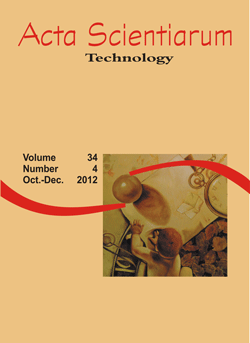<b>Environmental fragility and susceptibility mapping using geographic information systems: applications on Ribeirão do Pinhal watershed (Limeira, State of São Paulo)</b> - doi: 10.4025/actascitechnol.v34i4.10005
DOI:
https://doi.org/10.4025/actascitechnol.v34i4.10005Keywords:
geoprocessing, spatial analysis, anthropogenic environments, environmental fragilityAbstract
This paper presents the results of integrated environmental analysis of the Ribeirão do Pinhal drainage basin, undertaken with geographic information systems and spatial analysis techniques. The empirical analysis of environmental fragility methodology was used to identify areas that require more attention for improving environmental conditions. Because more than 60% of the study area has weak or very weak potential fragility grades, the natural characteristics of the basin may be considered appropriate. Regarding the environmental fragility, i.e. taking into account human actions, the basin has more than 50% of its area with weak or very weak grades. However, more than 40% of the study area has environmental fragility above their potential fragility grades. This situation indicates the presence of intensive land uses beyond natural landscape restoration processes. These sectors require that stricter territory management policies be implemented.
Downloads
Downloads
Published
How to Cite
Issue
Section
License
DECLARATION OF ORIGINALITY AND COPYRIGHTS
I Declare that current article is original and has not been submitted for publication, in part or in whole, to any other national or international journal.
The copyrights belong exclusively to the authors. Published content is licensed under Creative Commons Attribution 4.0 (CC BY 4.0) guidelines, which allows sharing (copy and distribution of the material in any medium or format) and adaptation (remix, transform, and build upon the material) for any purpose, even commercially, under the terms of attribution.
Read this link for further information on how to use CC BY 4.0 properly.











8.png)




